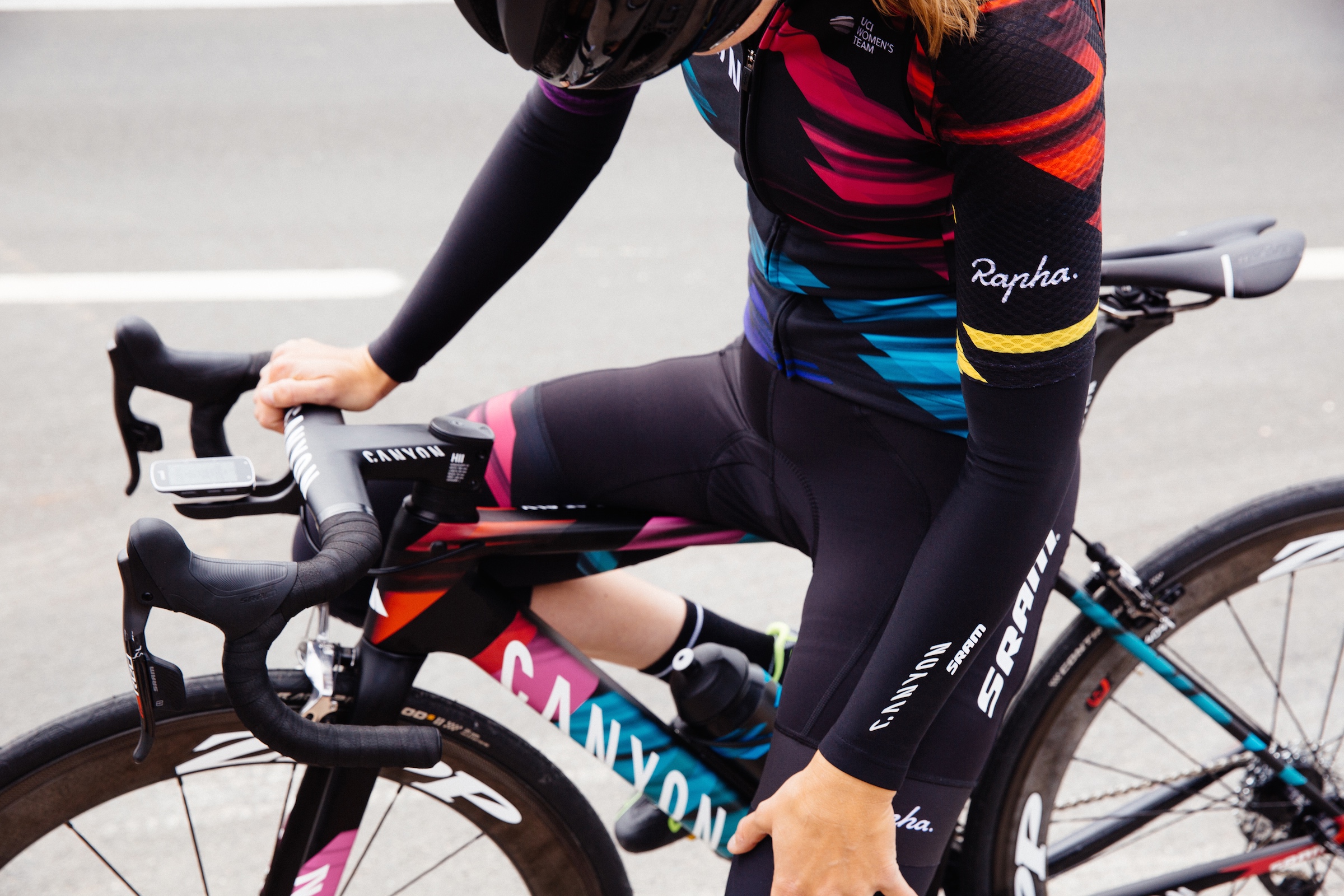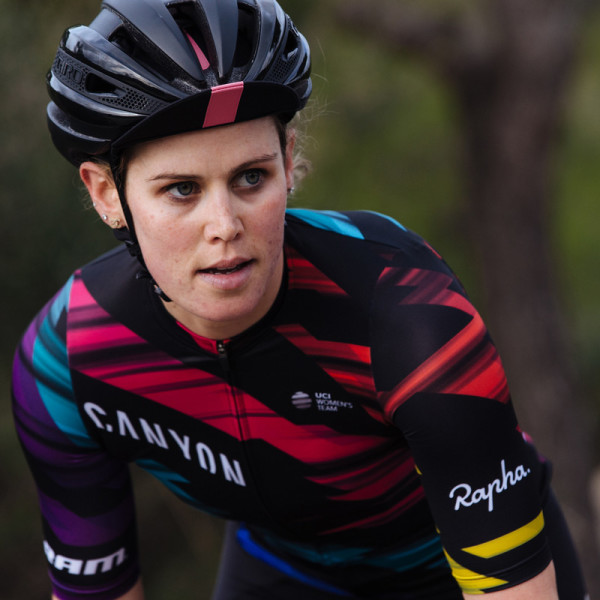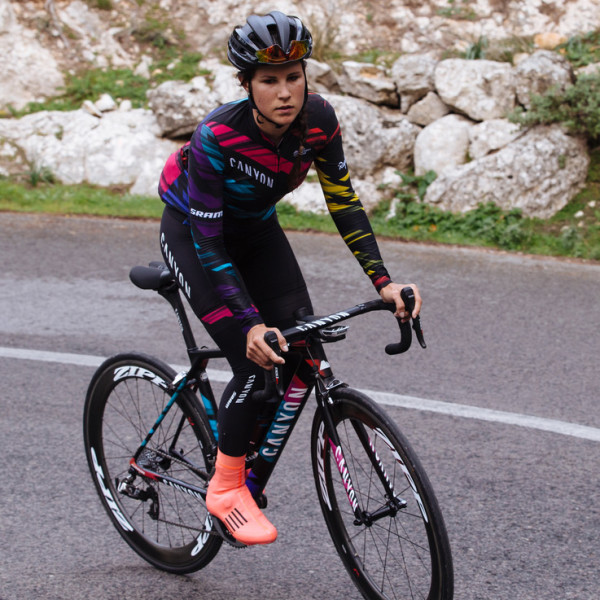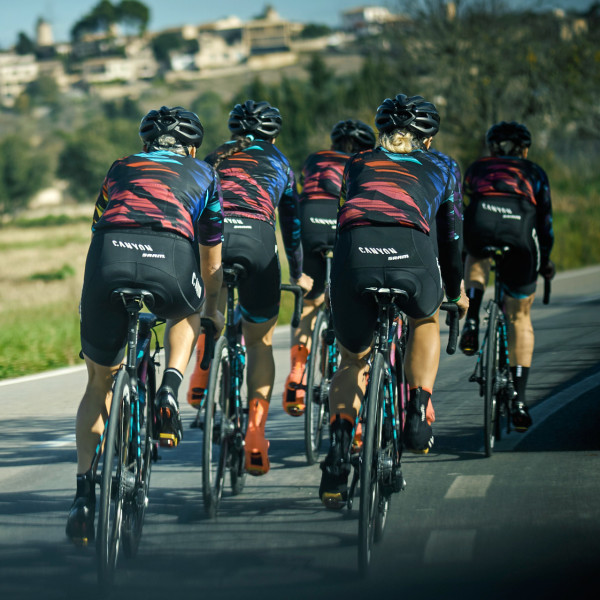Just a few weeks ago the new Canyon//SRAM launched to take on the inaugural 2016 Women’s WorldTour. While we don’t cover pro news very much, it’s great to see more technical development being put into women’s kit at the highest level that is being made available to everyday riders right away.
Rapha teased at that November launch with a stylized graphic that we didn’t anticipate would actually have just been a close-up of the final striking team kit design. Now they’ve released images of the team training in Mallorca in the design they developed to stand out in the bunch. Take a closer looks at the team Canyon Ultimate WMN CF SLX and the full Rapha kit…
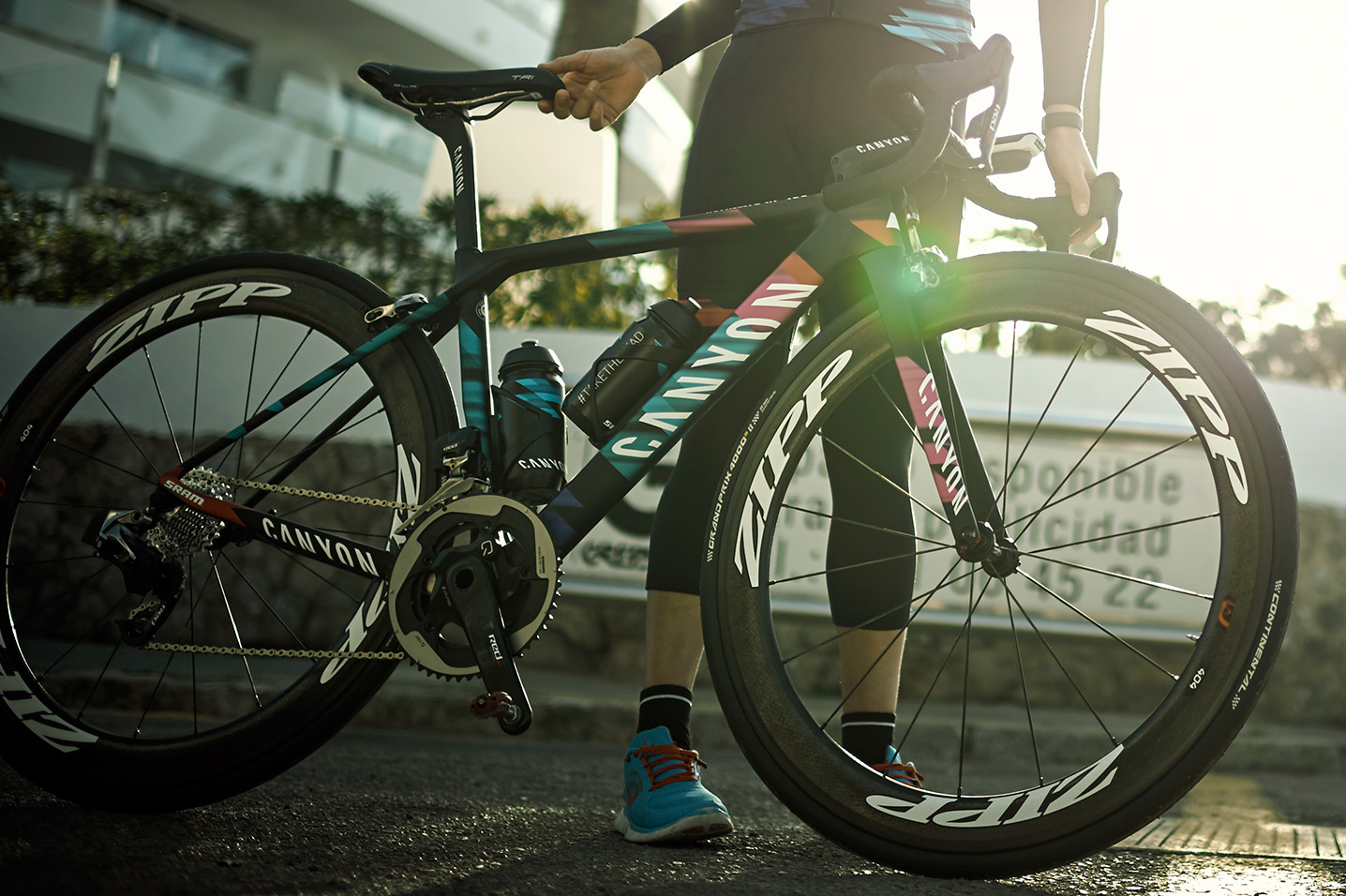
Canyon and SRAM backing the team as title sponsors was a big move for women’s cycling, ponying up not just money but cutting edge products so the team will race on the newest and best gear, something that hasn’t always been the case in the pro women’s peloton. Canyon will provide their new carbon Ultimate WMN CF SLX as the team’s primary race bike, that combines light weight and stiffness in an aero package. SRAM will also supply the team with their new sought after Red eTap groupset and a selection of Zipp wheels.
With the team partnership, Rapha is moving a big part of their R&D to the design of top-level women’s racing kit. By essentially getting a new development pool of some of the best women riders in the world, Rapha is looking to step up their game by refining their well received men’s Pro Team line, and expanding it into their women’s Souplesse clothing available to consumers.
From a practical side, Rapha wanted to make sure that the women of Canyon//SRAM stood out in the peloton, so the striking design makes a lot of sense. Rapha’s in house designer Ultan Coyle talked a bit about the unconventional kit design:
“We wanted to create a design that wasn’t gender specific, just a strong visual that had energy. I’ve long been drawn to the warning tape you see used on building sites and along the street; specifically when there are multiple layers wrapped around scaffolding poles or broken lamp posts to highlight potential dangers. I liked the idea of wrapping the body in the tape to suggest an athletic threat or danger to add attitude and which would come in handy when racing….so the tape formed the basis for the print which we then we re-coloured, or electrocuted it, to make it more striking.”
